Can t Continue on Download for Mac
Installing new versions of macOS on a Mac should be a pretty simple exercise. The Mac tells you there's an update available via a pop up in Notification Centre – in some cases (depending on your settings) it's even downloaded it already and just needs your go-ahead to install. However, sometimes when you click Go on an update things go a bit pear-shaped. In this tutorial we'll look at what to do if your Mac stalls or freezes during an operating system software update, or if you see an error message indicating that there is a problem.
This is particularly pertinent right now with macOS Monterey arriving on 25 October 2021. When macOS Big Sur arrived in November 2020 many people experienced difficulties downloading and installing it and, as anticipated, there were similar problems with the arrival of Monterey.
We look into what to do if you can't download macOS Monterey, fixes for when macOS Monterey won't install, and what you need to do if your Mac freezes in the middle of the update.
One big issue with Monterey appears to be that it is bricking some Intel Macs with a T1 or T2 processor (used for Touch Id and to manage the SMC). More on that below.
If you've seen the warning: 'The macOS installation couldn't be completed' or the message: 'An Error Occurred While Installing the Selected Updates' we're here to help. Or if having managed to download Monterey you are confronted with the message: "There is not enough free space on the selected volume to upgrade the OS!", we are here to help. These were all issues we encountered in 2020, so it's quite possible that the same problems will be faced with the arrival of Monterey.
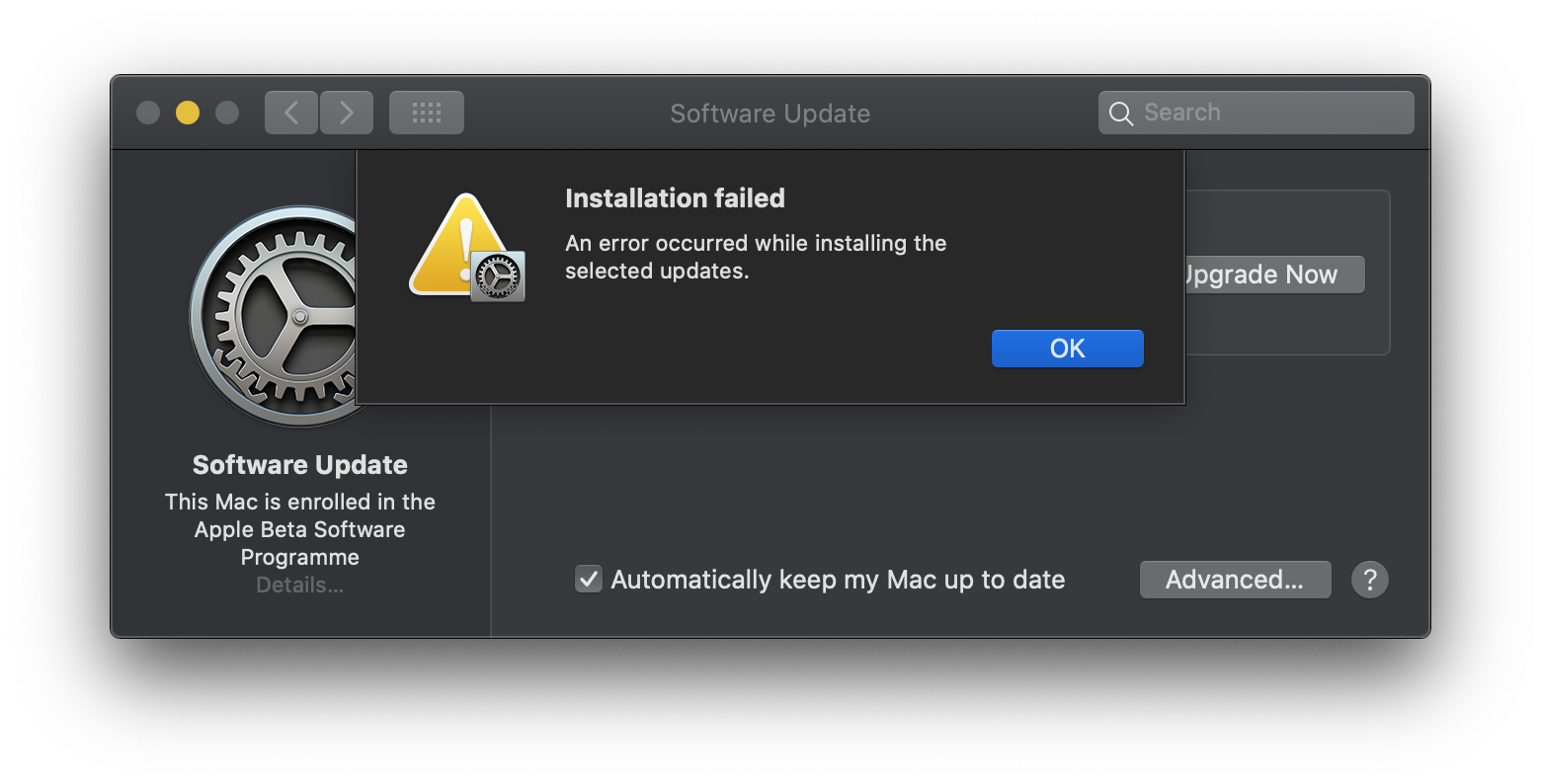
Problems with Monterey
It is unfortunately the case that when Apple launches a new version of macOS some Mac users suffering from issues following the update, these issues tend to affect older Macs more than newer Macs.
It is possible that these issues will be addressed in macOS 12.1 or later, but if that's no good for you take a look below to see if your issue is being experienced by others how they are tackling the problem.
Bricked Macs
Apparently installing Monterey is bricking some Macs – specifically older Intel-based models with a T1 and T2 chip (which drives the System Management Controller (SMC) and Touch ID sensors in some Intel Macs).
The reason for problem seems to be that something is interfering with the process when the firmware update happens. One suggested fix is to restore the Mac's firmware, but that isn't simple. The rescue procedure for T2 Macs, as outlined in an Apple document here, requires a second Intel Mac, from which you can supply the damaged computers with new firmware for the T2 processor via the Apple Configurator 2 app. It's even more complicated if you have a T1, so you may need to go to an Apple Store in that case.
Memory management problem
There are also reports that a memory management bug is causing some Macs to run out of free memory. Users might see the warning: "Your system has run out of application memory." In that case the bug seems to affect both new and old Macs, rather than being limited to just Apple Silicon or Intel machines.
Not sure why I keep getting these warning on my M1 Max. I'm not doing anything crazy with it pic.twitter.com/B0o7t2jtN0
— Tyler Stalman (@stalman) October 28, 2021
If you encounter the bug you may find that force-quitting your applications or rebooting your Mac fixes it.
USB issues
There have also been reports of a problem with the USB 3.0 ports – mainly affecting hubs, but also some USB peripherals do not work properly after the upgrade.
In this case the problem seems to affect computers that feature Apple's M1 chip, but there are also reports of Intel Macs being affected.
Problems with Big Sur…
In 2020 when Big Sur launched some Mac users were unfortunate enough to experience an issue where the installer would fail to check how much space was available before installing the operating system update. As a result the installation would be unable to complete and all the storage available on the Mac would be filled making the Mac unusable. Apple issued an update to Big Sur that addressed this particular problem on 15 February 2021. Read about Big Sur version 11.2.1 (build 20D75) and how it fixes the problem in this article: Second Big Sur 11.2.1 update fixes Mac installation issue. It is likely that if a similar problem happens in Monterey we will see an update soon after launch.
With Big Sur there were also reports of messages such as: 'macOS could not be installed on your computer', 'gateway timed out' or 'bad gateway', and 'The network connection was lost' we explain how we fixed these below.
And, with Big Sur users were also confronted with an message that stated: "The update package has been deleted since being downloaded from the Apple Software Update server" we address that below too.
Why won't macOS Monterey download?
There are a few reasons why the macOS download or installation process might not work or be interrupted. There are also a few possible reasons why download might be taking too long. We'll run through the various problems you might encounter and the best fixes for them below.
Problem: Download taking too long
If it happens to be a new version of the Mac operating system and you are attempting to download it just after release there could be problems due to so many people accessing the servers at the same time.
As a result the download of the software may be slow and, even if you do manage to download it, the installation may freeze as it tries to verify your details with Apple.
In 2020 our download of Big Sur threatened to take a whole day – a typical sign that too many people are attempting to access the servers.
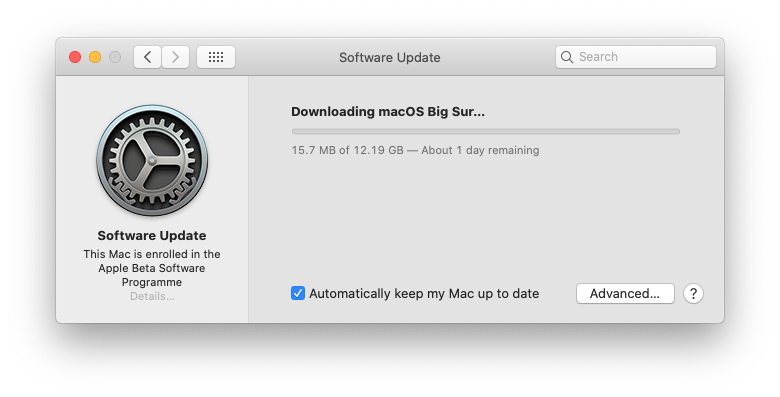
You can gauge whether there are issues with the servers at Apple's end by visiting Apple's server status webpage here: System Status page. Check the macOS Software Update section to see if there are any known issues. (If the link doesn't work it's https://www.apple.com/uk/support/systemstatus/)
As you will see from the screen shot below there was a problem with macOS Software Update on 12 November. It has since been resolved according to Apple.
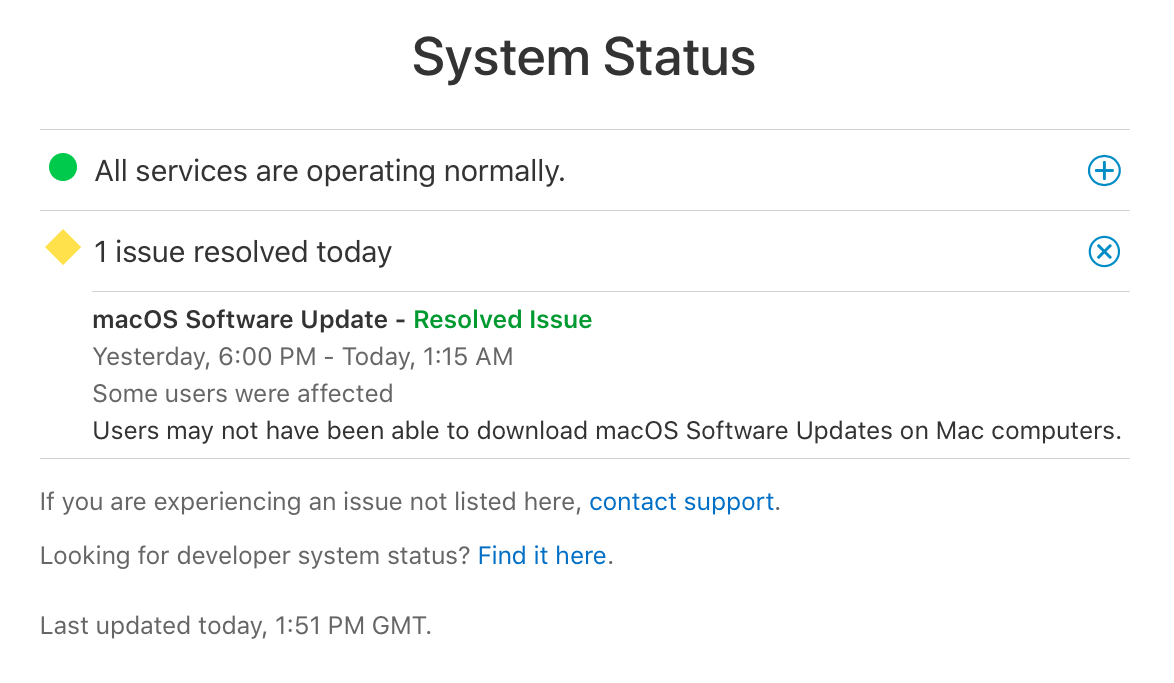
While the issue with Big Sur was live on 12 November 2020 Apple had the following text on the site indicating that there was a problem: "Users may not be able to download macOS Software Updates on Mac computers."
Fix: speed up the download
It's not always Apple's servers that are to blame though. Perhaps the issue is at your end. Maybe your WiFi connection is poor. We suggest that you try moving closer to the router.
You might find that things are quicker if you move from a Wi-Fi to a wired connection. If you have a Ethernet cable and the necessary adapter if your Mac only has a USB-C port, plug yourself directly into the hub. Your download will be much faster over a wired connection.
Read more: How to fix Wi-Fi problems on Mac
Fix: Turn on Content Caching
Another thing that you could try is to adjust Content Caching.
When the download threatened to take a long time we turned on Content Caching.
- Go to System Preferences > Sharing.
- Turning Content Caching.
- Restarting the Mac.
Apparently Content Caching reduces bandwidth usage and speeds up installation on supported devices by storing software updates on the computer.
We made sure that the Cache Size was unlimited – click on Options. And we also made sure that the option selected beside Cache was All Content.
With these changes in place the download was complete in half an hour rather than the 10 hours initially anticipated.
Problem: macOS update won't download
Another reason you may not be able to download a macOS update is if you don't have adequate amounts of free space on your Mac.
Possibly there isn't adequate space available on your Mac (we always recommend that you don't install if you have less than 20GB of space free as your Mac may struggle with the installation otherwise – in fact with Big Sur weighing in at just over 12GB, and Monterey likely to be just as large, you'll need all the space you can get!)
You'll see below that even 20GB space isn't actually sufficient when it comes to installing macOS Big Sur though. We actually needed 35GB available when it came to doing the installation. So that's more 45GB required before you start – you might want to read this: Don't bother trying to update to Big Sur if you have a 128GB Mac.
Fix: Make space
We offer advice on making more space on your Mac here: How to free space on a Mac. You could for example delete old emails and text messages, or locate old Time Machine backup files from your Mac and delete them.
One great way to free up space is to delete the images associated with the Messages you've received on your Mac. You can do this by clicking on the Apple Logo > About this Mac > Manage and then choosing Messages and deleting as many images and videos as you can.
You could also try an app such as Clean Your Mac to delete caches and other things from your Mac. If you'd rather not pay we run through How to delete Other storage on the Mac, How to delete System storage on a Mac, and How to delete Cache on a Mac.
Fix: Use Safe Mode
Another way you might be able to get the macOS update to download and install is to use Safe Mode.
Press the power button and hold down the Shift key to start the Mac up in Safe Mode. Open App Store and update your apps while in Safe mode. Reboot.
To access Safe Mode press and hold the Shift key when you start up your Mac. Wait while the Apple logo appears, and then, when the login window appears release the Shift key.
Here's how to use Safe Mode on a Mac.
Fix: Download from Mac App Store
If you are on Catalina or later you might think you have to stick to downloading the new software via Software Update, but you can still grab the download via the Mac App Store.
For example, you can Download MacOS Big Sur on the Mac App Store here.
When we attempted to download Catalina from the Mac App Store were confronted by a message that the requested version of macOS couldn't be found though.
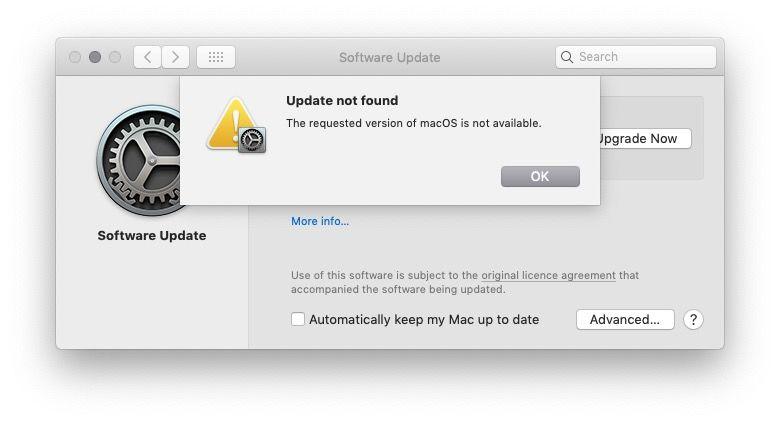
This could just be a temporary glitch, perhaps while Apple relocates the predecessor to a new location on the Mac App Store. We have links to all versions of macOS here: How to get old macOS.
Fix: Download the software from Apple's website
If you're having problems downloading a point update (not a complete new version) via Software Update or Mac App Store, you can use Apple's website instead. You can find the latest macOS updates here. To find any software update on the site, just search for it.
Problem: macOS won't install errors
Perhaps you managed to download Monterey, Big Sur or any other macOS update and then found that it wouldn't install. This also happened to many people when attempting to download Big Sur on 12 November who saw an error message suggesting that 'Installation failed: error occurred while installing the update', we'll run through that example before looking at some other error messages we have seen in the past.
Error: Upgrade runs out of space and fails
In some cases the macOS Big Sur installer wasn't checking that there was sufficient space available before performing the installation. As a result some Mac users were finding that their Macs were unable to complete the installation before they ran out of space.
Since it is possible that the same, or similar problems, may plague Monterey updates you may be revealed to know that in 2020 this particular problem was addressed in an update to Big Sur so we recommend you perform that update. Read: Big Sur 11.2.1 (v2) fixes this Mac installation issue.
In 2020 the best solution was to do a clean install of Big Sur so that may be the case in 2021 too.
Error: Installation failed error occurred while installing the update
One of the biggest problems with Big Sur was that the installer would identify that there wasn't enough space available. We sincerely hope not to have the same problem in 2021 with Monterey.
Since the macOS Big Sur installation required around 48.5GB free space – that's 35.5GB plus another 13GB for the installer itself. Lack of space was quite a common problem among those with 128GB Macs. That is the problem we encountered, as we will detail below.
With the Big Sur update, if you saw the error message: 'Installation failed: error occured while installing the update' you were not alone. There were multiple reports of people having difficulties downloading Big Sur. In fact, we experienced this exact problem with our attempt to download and install Big Sur. We'll share what happened in case it is helpful to you:
The first clue that something was going wrong was when it looked like the download of macOS Big Sur was finally complete – with the complete 12.2GB downloaded – but the bar was stuck with some distance to go, we left it alone for an hour or so in the hope that it would right itself.
However, when we returned we saw the message that: "Installation failed. An error occured while installing the update".
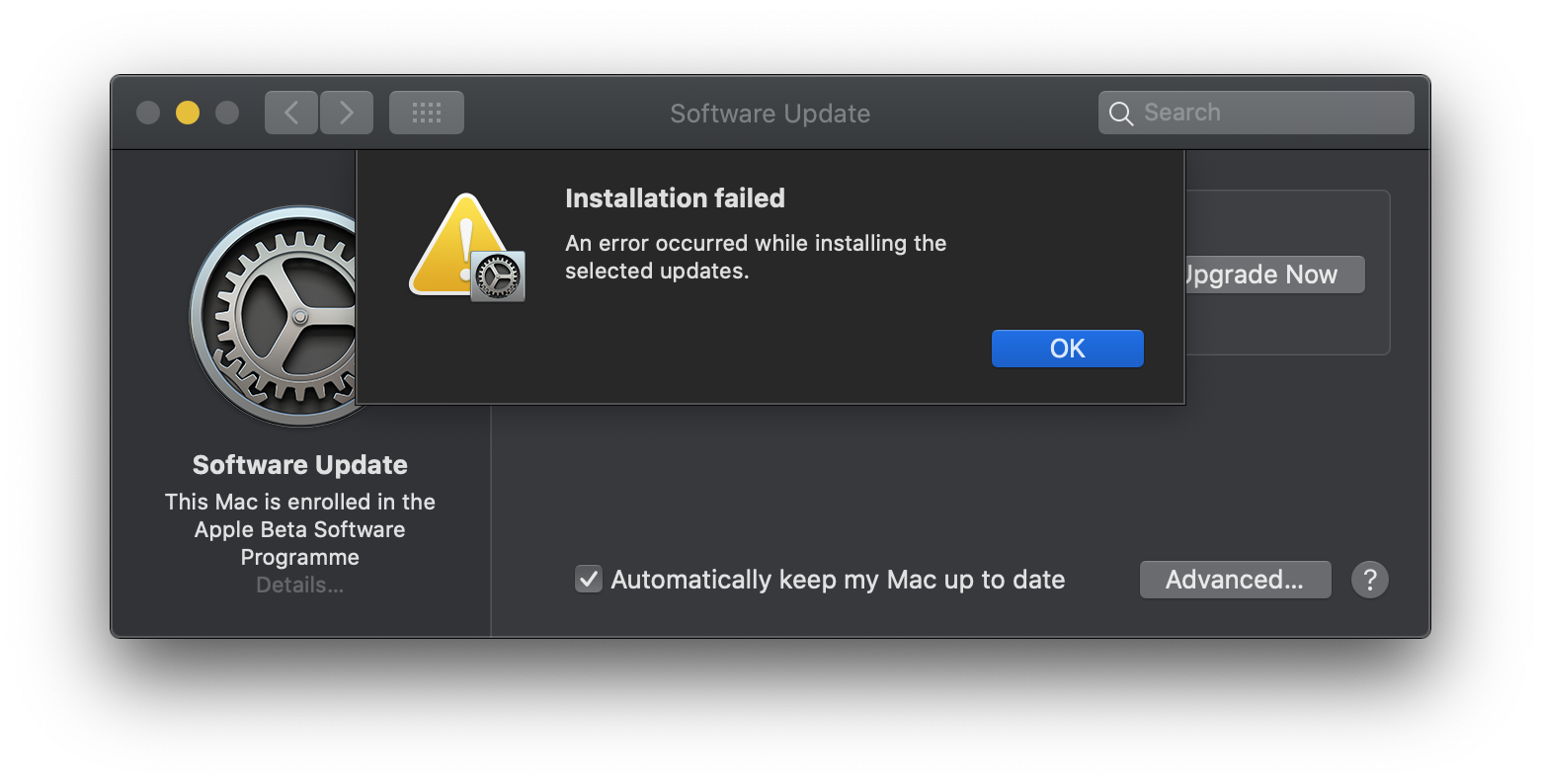
The strange thing was that even though it had earlier indicated that the whole Big Sur file had been downloaded, it was no where to be seen on our Mac.
We attempted to start the download again and saw another message, this time suggesting that the file could not be downloaded.
It seems that our Mac knew that the Big Sur files were on our Mac because when we searched again for it the Big Sur file were there. You could search for Big Sur using Spotlight and try and install it – or you could delete the files and start again. (Except as you'll see if you continue to read, that didn't help us particularly).
Error: There is not enough free space on the selected volume to upgrade the OS
Still relating to our struggles updating to Big Sur… Having located the Install Big Sur files we thought we would now be able to install it, except that when we tried to we were confronted with a request for 14GB space. It turns out that Big Sur is a 12.2GB download, but even after that you need about 34GB of free space! Given that Apple has only just stopped selling Macs with 128GB SSDs we imagine a lot of people are in the same boat as us right now. We have managed to scrape back to 25.5GB of free space but we need to find another 10GB.
If like us you are looking at the Other storage on your Mac and wondering what the hell is taking up so much space, have a look at How to delete Other storage on your Mac.
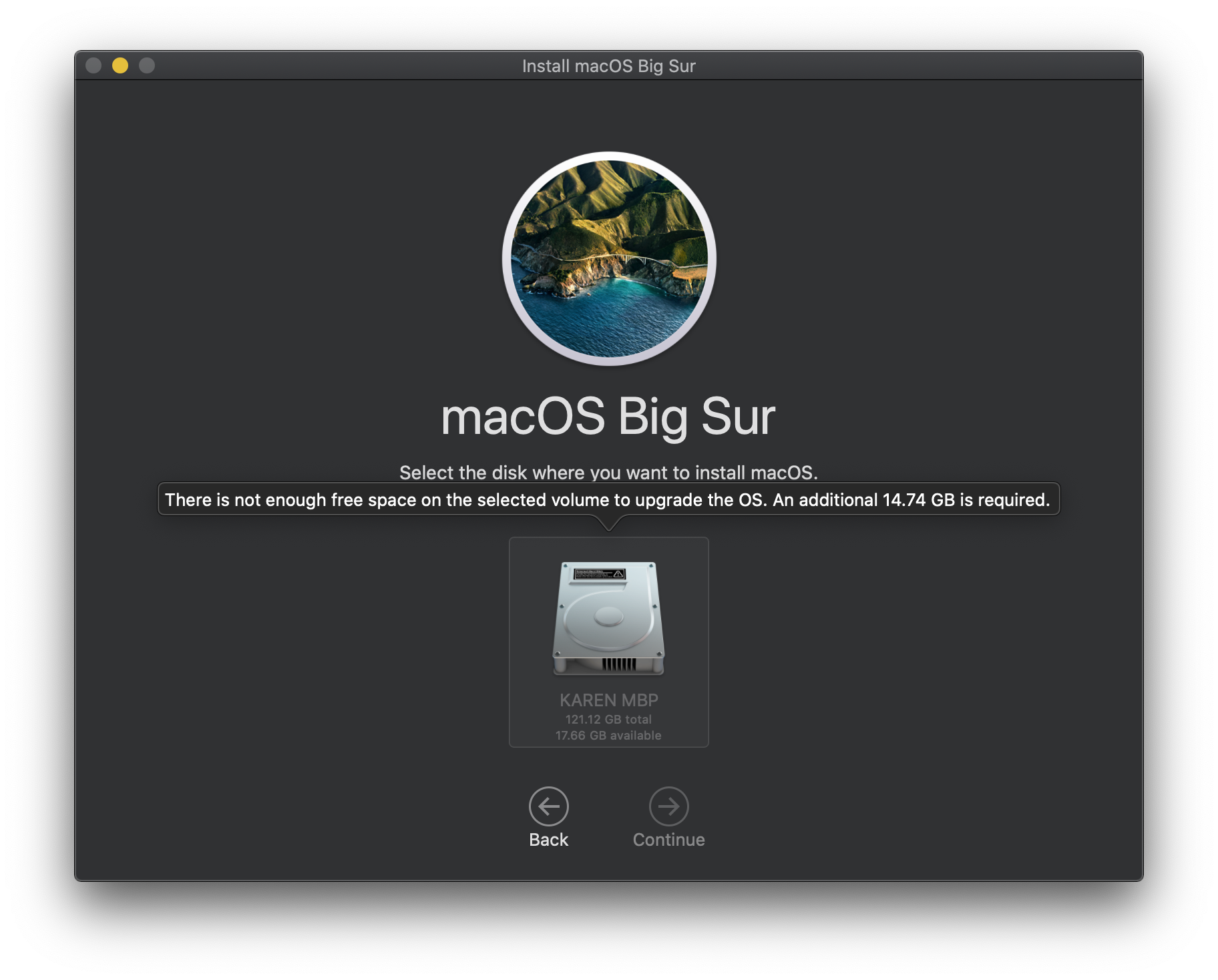
Again, doing a clean install of Big Sur could be one way to get enough space for the installation.
In 2020 when confronted with this problem we armed ourselves with CleanMyMac X to delete cached files and other superfluous data, and then blitzed the images and videos associated with our Messages. In the end we managed to get the 10GB we needed.
Fix: "The update package has been deleted" error
Another year and another macOS installation struggle! While attempting to download Catalina the day after launch in 2019 we saw an error message indicating: "The update package has been deleted since being downloaded from the Apple Software Update server".
Initially we assumed that this meant that Apple had withdrawn the software, but on further investigation it appeared that it related to issue was with our network.
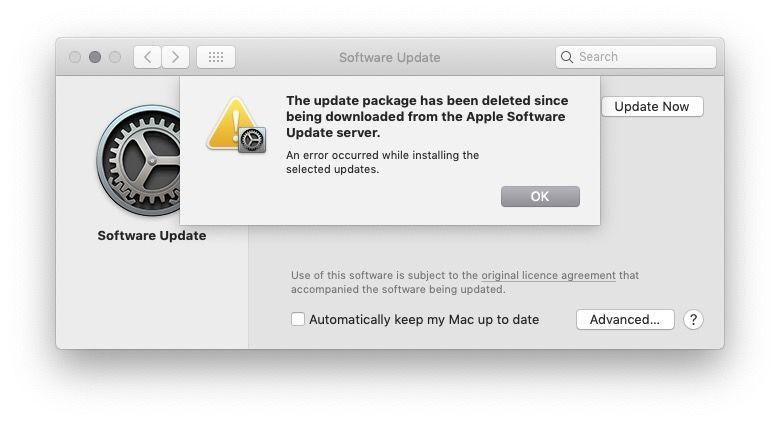
It seems that it was a case of there being too many Apple devices on our network causing too much competition for bandwidth. We stopped streaming radio, turned off other devices, and moved our Mac closer to the router. If we'd have had an Ethernet cable handy we'd have used that. Either way, it fixed the problem for us that time.
Other fixes for macOS download problems
Here are some of the most useful suggestions to work through in order to fix a problem with a macOS download. You might also want to run through our advice here: How to get your Mac ready for macOS Monterey.
1. Check your Mac is healthy
It's always wise to run through a standard series of checks before you perform an operating system update on a Mac. We cover preparation steps in the first section of our guide showing How to update macOS on a Mac.
2. Cancel the download/stop the update
You might be able to cancel the download, but the method will depend on what version of macOS you have installed.
In Mojave Apple changed the route users take to download a macOS Software Updates. They are now accessed via System Preferences > Software Update, where previously they were downloaded via the Mac App Store.
If you want to stop the download, you can click on the x that appears beside the bar that shows the download progress, as shown in the screenshot below.

Pre-Mojave, you may be able to fix a stuck update by going to the Mac App Store, finding the software you are downloading, and pressing Option/Alt. When you do so you should see the option to Cancel the download.
Having cancelled the download you should be able to start it again, hopefully without any problems this time.
Problem: Stalled macOS update
Generally, if there's a problem with your software installation it will get stuck on the updating screen, showing an Apple logo with a status bar showing the progress as the software is loading. There may be what people refer to as a 'spinning beach ball'.
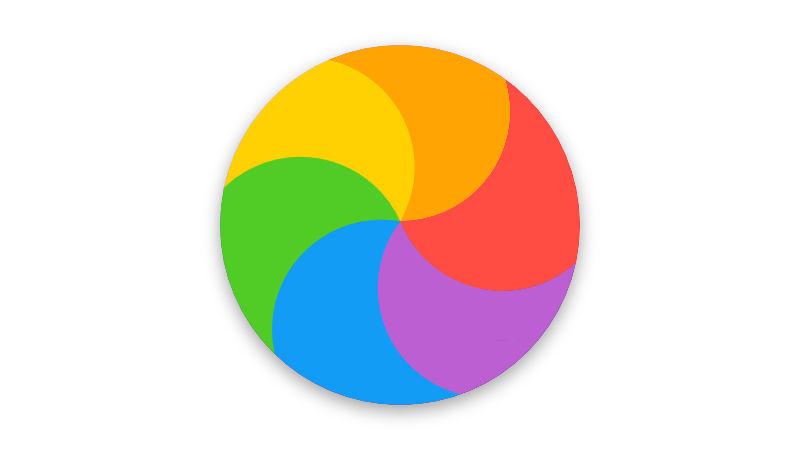
Alternatively, you may see a white, grey or black screen. On many Macs the screen may be so dark that you might not even be able to tell if the Mac is turned on.
However, you want to be absolutely sure that the installation isn't still running in the background because forcibly rebooting the Mac during an installation will interrupt the installation process and potentially cause you to lose data. It's one reason why it's recommended that you back up your Mac before you install new software.
Alternatively, you might find that your Mac gets stuck in the installer with a message that "macOS could not be installed on your computer". When we clicked Restart the same thing happened, in the end, the only way we were able to fix it was by starting in Safe Mode and downloading the installer again. Find out exactly what we did below.
If your Mac appears to have frozen during the install, it's worth listening to your Mac for signs of life – you may be able to hear whiring – and following the below advice.
1. Find out if your Mac has really frozen
Before you conclude that your Mac has frozen during the installation, you need to be aware of the following.
Sometimes updating the software on a Mac can take a Very. Long. Time. You may be confronted by what looks like a frozen update, but if you leave it for a few hours it could finally get to the end of its task. Sometimes it's worth leaving the Mac overnight to finish the job it's started. Sometimes updates can take 16 hours or more – especially on the days when Apple releases a new version of its Mac operating system.
Remember, the progress bar you see during installation is just a best guess at how long it will take. In our experience one minute it tells us there will be a two-hour wait, then 45 minutes, then an hour, before jumping down to 20 minutes. Sometimes things get slowed down because the Mac is taking a while to install one file behind the scenes and that's thrown the whole update time prediction out the window.
The Mac might have been stuck on 20 minutes remaining for the past two hours, but this doesn't necessarily mean it's not busy trying to install the software.
2. Look at the Log to see if your Mac is still installing macOS
Press Command + L. This brings up additional information and more details about the amount of time still remaining for the install. It may give you a better indication of what files are being installed and the amount of time left.
3. Wait
If it turns out that the installation hasn't stalled be patient and wait for a few more hours.
One key thing to remember: Apple indicates how much time is apparently left for an installation… Don't pay this any attention because it is NEVER RIGHT!
Problem: Mac freezes during installation
If you're positive that the Mac isn't still working on updating your software then run through the following steps:
1. Shut down, wait a few seconds, then restart your Mac
Press and hold the power button to shut down and start your Mac back up.
2. Go to System Preferences > Software Update
Or, if you are on an older macOS version, go to the Mac App Store and open Updates.
You should find that the update/installation process carries on from where it left off.
3. Check the Log screen to see if files are being installed
When the progress bar appears, press Command + L again to check the Log screen and ensure files are being installed. If the Log screen shows that nothing is happening move on to the next step.
4. Try installing the Combo update
As we mentioned earlier, Apple hosts software on its website, so you can download it from there if you are having problems with the usual method.
There's good reason to get your software from Apple's website if you're encountering problems: the version of the software available from Software Update or the Mac App Store will only include the files necessary to update your Mac.
If you go to Apple's support website you can find a Combo updater which includes all the files required to update the macOS. This version of the update will replace all the system files and thereby ensure the update is complete.

5. Reset the NVRAM
If Safe Mode doesn't work, restart the Mac and hold down Command, Option/Alt, P and R. This will reset the NVRAM. Wait until the computer restarts and wait to see if it starts updating.
For more information read How to reset the PRAM/NVRAM here.
6. Use Recovery Mode to reinstall macOS
As a final option you could restart the Mac in Recovery Mode (hold down Command + R at startup). There are a number of options to choose from here – you could recover your Mac from your last Time Machine backup, or perform a disk repair – but we recommend choosing the 'Install new OS' option. We have a separate tutorial on how to reinstall MacOS using Recovery Mode.
When it reinstalls macOS your Mac will replace all the Apple system files overwriting any problematic ones that may be contributing to this error – hopefully. This update won't include the latest version of the software so after performing the update, check Software Update and apply the latest macOS update.
7. Install the OS from an external drive
If you're still having issues with the install you could try installing the OS from an external drive. Read this tutorial to find out how to create a bootable installer and install macOS from an external drive.
8. Run Disk Utility once you've updated
When you finally get the software up and running we advise that you run Disk Utility to correct any issues that might have caused the problem in the first place.
What to do if macOS could not be installed on your computer
When we started up our Mac and saw the message macOS could not be installed on your computer we were initially a little confused – as far as we were concerned we hadn't been trying to install macOS. But, regardless, we were stuck in a loop. When we clicked Restart our Mac restarted, but was still stuck in the installer.
We tried to quit the installer – we clicked on the Installer window and then from the menu above choose Quit MacOS Installer (alternatively Command + Q). Unfortunately for us when we booted up our Mac again we had the same problem with it opening the installer.
We then ran through the following options and had more success:
- Start in Safe Mode: We held down the shift key while we started up our Mac. This way we were able to boot up in Safe Mode. In Safe Mode you will find the Mac is a bit glitchy but you should be able to do what you need to do to fix the problem.
- Once in Safe Mode we opened the Mac App Store and searched for Big Sur. In later versions of macOS you should be able to find the update in System Preferences Software Update.
- We clicked download and waited while the Big Sur installer downloaded in the background.
- Once the installer was downloaded and we were ready to install we continued with the installation.
It's also possible that macOS is not able to be installed on your Mac because your Mac is too old: you can see which Macs can run Monterey here, and which Macs can run Big Sur here.
Read next: How to fix a frozen Mac. We also have a complete guide to fixing some of the most common Mac issues. Plus we discuss everything you need to know about getting Apple products repaired.
Source: https://www.macworld.com/article/671831/macos-monterey-wont-install-fixes.html
0 Response to "Can t Continue on Download for Mac"
Post a Comment